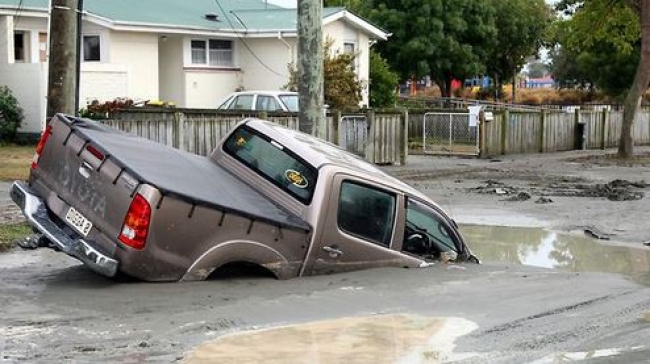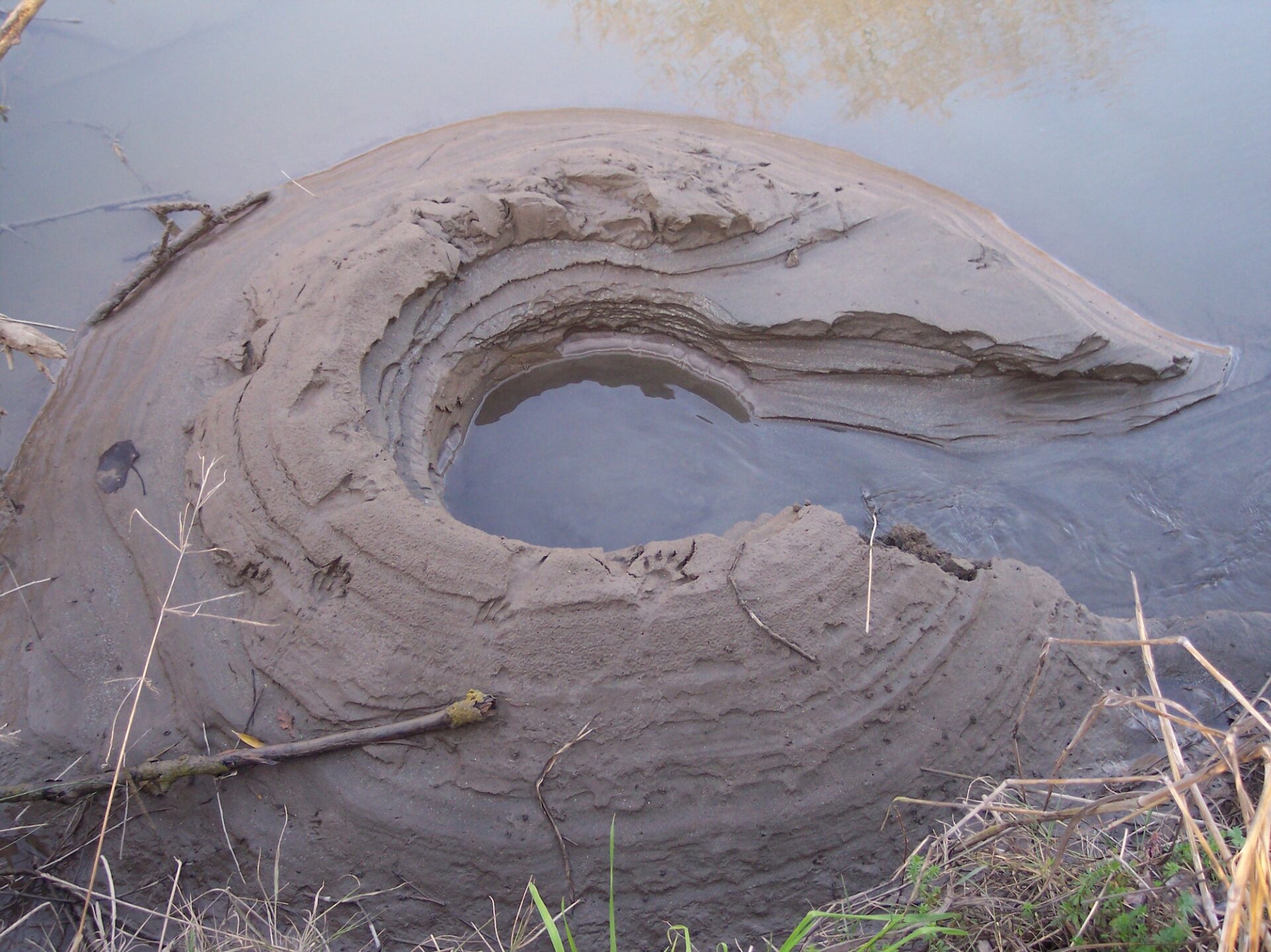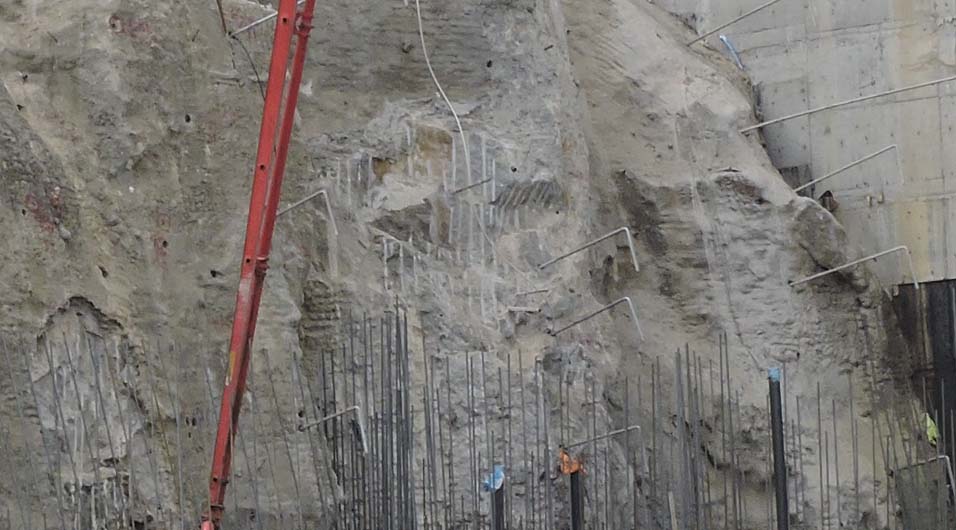The process known as soil liquefaction occurs when a block of soil suddenly behaves more like a liquid than a solid.
The most common scenario for liquefaction is when an applied force, such as an earthquake, increases pore pressure and reduces the soil’s effective stress.
Liquefaction takes place in saturated soils where water can fill the gap between individual particles. The weight of the buried soil rests on the framework of grain contacts that make up the area before an earthquake because the water pressure is generally low at that time.
But when an earthquake shakes the building, the weight is no longer supported by the soil particles, and the groundwater pressure starts to increase. As the soil moves, the soil particles can travel further and entangle themselves in the water. When soil liquefies, it pushes open ground fissures so that it can escape and reach the surface. Flooding is frequently caused by the ejected material, and the soil may develop holes as a result.

The soil liquefaction depends on several factors.
Factors Affecting Soil Liquefaction
- Soil type
- Degree of saturation
- Grain size and its distribution
- Initial relative density of soil
- Vibration characteristics
- Drainage arrangement
- Surcharge load
- Duration of earthquake
- Frequency of the earthquake
- Depth of soil layers
- Trapped air content
- Soil compaction
- Soil close to coastal regions
What Happens in Soil Liquefaction
the soil effective stress can be written as follows
Effective Vertical Stress = [Vertical Stress] – [Pore Pressure]
The soil loses internal cohesion and starts to behave like a liquid rather than a solid when the soil’s effective vertical stress turns negative, which indicates the pore pressure is higher than the vertical stress. This can cause significant damage to structures that are built on top of the soil.
Soil liquefaction is referred to as a secondary hazard since it most frequently results from an earthquake’s shaking.
The soil liquefaction occurs in sandy soils, high porosity soil with large grains. In addition, as indicated previously, the factors affecting liquefaction will be dominant.
Consequences of Liquefaction
Liquefaction is a severe problem in construction as its causes issues such as collapsing the very large structure. Therefore, we are doing construction of such soils, the proper assessment shall be done before the construction and necessary preventive measures shall be taken if we do the construction in the same area.
Some of the effects of soil liquefaction are as follows.
- Sand Boiling
- Damage to the Offshore Structures
- Building Failures by settlement and overturning
- Retaining Wall Failures
- Development of Very High Lateral Loads on Structure Like Sea Walls
- Damage to Pile Foundation with the loss of the lateral support
- Surface Landsides
- Foundation Cracks
- Slope Erosion
- Loss of Bearing Support
- Floating buried structures such as tanks
- Floating of burred service lines
- Lateral Spreading; movement of soil lateral and formation of large cracks

Method to Determine Liquefaction
Idriss Boulanger Method is used to find the potential of soil liquefaction. This will do with the calculation of the Cyclic Stress Ratio (CSR) and Cyclic Resistance Ratio (CRR).
Some other ways of determining soil liquefaction are as follows.
- Engineering Judgement based on the experience
- Standard Blasting Test
- Ground Response Analysis and Laboratory Test Procedures
Methods of Reducing Liquefaction
It is very important to take necessary preventive measures if we built a structure in the soils susceptible to liquefaction. Some of the important aspects that need consideration in this regard are as follows.
- Avoid soil that is susceptible to liquefaction
- Build liquefaction Resistance structures
- Improve the soil
If we are planning for the construction of soil susceptible to liquefaction, the one of above actions shall be taken. Let’s see how we can avoid it.
How to Prevent Soil Liquefaction
There are preventive measures that can be adopted for avoiding soil liquefaction. Some of the main methods are as follows.
- Use of Deep Soil Mixing
- Drain Pile Techniques / Drain Column
This method can be used to reduce pore water pressure development. As discussed previously, this will be useful to minimize/avoid soil behaving as a liquid.
- Dynamic Compaction
Dynamic compaction is more useful when we need to compact large areas. Further, this method can be used to compact the soils at deeper levels.
- Stone Columns
Stone columns improve the stiffness of the soil and reduce the loss of strength of the soil with the effect of an earthquake. Further, stone columns perform well even if there is water.


![Tunnel Design [a guide to designers]](https://www.structuralguide.com/wp-content/uploads/2019/11/Tunnel-1-1024x599.jpg)